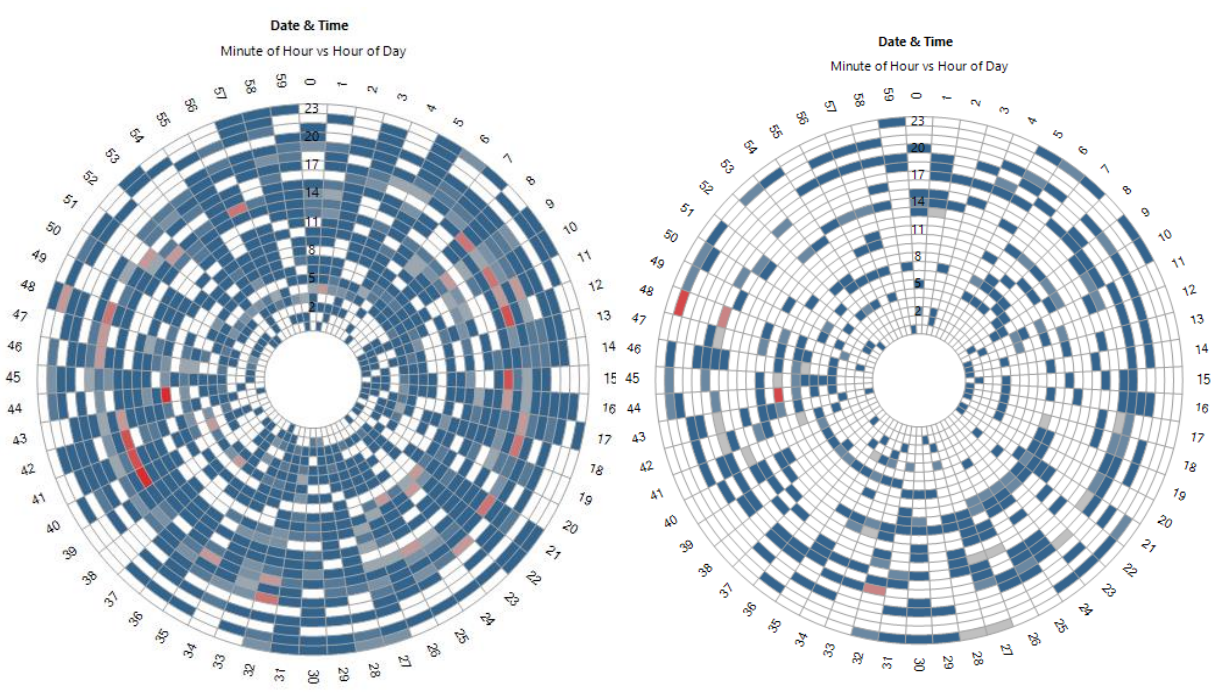Human trafficking is taking a new direction and police forces are struggling to keep up. With the support of i2 and DataExpert, law enforcement is quickly adapting to this new approach by using tools and techniques to combat the rise in online trafficking.
Locally, nationally and internationally, the world of crime is changing. Once almost exclusive to homes, streets and cities, criminals are now moving online to better organise their crimes and potentially mask their activities in the process.
Trafficking is moving from the more physical world to the more digital world. Platforms like OnlyFans are making it easier. OSINT and data analysis tools, such as i2 Analyst’s Notebook, and iBase allow us to analyse trends in a strategic manner.
Michelle Rasch, DataExpert, and a specialist in legal psychology and forensic criminology.
Defined as recruiting, transferring, harbouring or receiving people, with the aim of exploiting, human trafficking continues to cause untold harm to vulnerable and exploited individuals across the world.
The individuals and groups behind trafficking are often quick to abuse vulnerability that comes from age, social circumstance, or background. Sexual exploitation is a form of human trafficking that is widespread, especially in The Netherlands.

Human trafficking within the European Union remains difficult to track by numbers, and the numbers that are captured can be misleading. It could be that cases on paper are down, but it’s also an indicator that trafficking cases may not be being reported. And it’s a commonly held belief across Europe that many vulnerable individuals may be unaware that they’re involved in a trafficking operation before it’s too late.
On a national level, changes in local laws across Europe have meant that strong regulation regarding labour or human trafficking in one country can push human trafficking to cross the borders to neighbouring countries. Also fueling the potential for human trafficking, has been the significant increase in the number of refugees arriving in Europe. Geopolitical crises across the world also provide an opportunity for the exploitation of the world’s most vulnerable communities.
The biggest catalyst, however, for the digital transition of sex work and associated crimes is likely due to the COVID-19 lockdowns. With the introduction of stricter laws, reduced income, and isolation, the most vulnerable groups became even more vulnerable.

As a result, the creation and/or rise of platforms like Fansly, Fanzen, and OnlyFans has seen a significant surge in content from exploited, vulnerable people. Often these accounts are managed by traffickers and not the actual ‘models’ themselves. This is the world of ePimping, where models are being marketed and managed by groups of traffickers.
OnlyFans lets subscribers pay for exclusive images and videos posted by users, and often allows contact with the model. Whilst not exclusively, it is most commonly used to host pornographic material that is sold for a subscription cost.
The demand for digital pornographic content remains high, with niches for specialist categories within the industry leading to exploitation of vulnerable people.
The promotion of an OnlyFans models isn’t always obvious as social media platforms are cracking down on promoting this platform. Mainstream social media channels often act as catalysts to attract visitors and customers. However, they can be banned for mentioning or redirecting to OnlyFans, so instead promotors will use other signposts, such as using a chili pepper emoji, or referring to themselves as ‘accountants’.
ePimps, often anonymous or using fake identities, run other social media accounts, such as TikTok and Instagram, to promote models, and hire ‘live chatters’ on behalf of their models. They may also approach people who aren’t yet on the platform with false promises of lots of money and freedom for seemingly little work.
Significant money can be made on OnlyFans, however, it requires a large number of subscribers. Typically though, the model can be left with little to show for it, especially once the ePimp has taken their cut and OnlyFans has taken their 20% fee. And while the models may have been initially happy with the income, they will find it difficult to leave their ePimp and will remain in the sex work trade long after they may have wanted to leave.
However, with steady audience demand and the associated high income, ePimping has been allowed to grow.
This new phenomenon is hard to track, trace and ultimately prosecute, however, there are already signs that advanced data collection and analysis can provide the critical evidence that makes a difference in human trafficking investigations.
DataExpert embarked on months of in-depth OSINT data collection. The team, using i2 Analyst’s Notebook, were then able to extract insights and patterns of behaviour such as the most common talking points and the most active users. Creating timewheels, for example, revealed the ePimps ‘working hours’ to create a better image of their possible locations.

Above: Timewheel analysis using i2 Analyst’s Notebook from Michele's presentation. To download the presentation, complete the form at the bottom of this page.
In addition, the team were also able to identify models that were more vulnerable and/or at higher risk by analysing factors such as pricing and services offered.
DataExpert used both i2 Analyst’s notebook and iBase in both a strategic and operational analysis capacity – so whether it’s exploring high-level trends or lower-level interactions, the same data was able to reveal different levels of insight.
Whilst this transition in human trafficking continues to develop, staying ahead may be challenging. Knowing the processes of initiation and exploitation of individuals, as well as how the platforms work, can help law enforcement to recognise the signs of exploitation sooner e.g. learning jargon and spotting key warning signs.
The effective use of i2 Analyst’s Notebook and iBase can be used to rapidly analyse large volumes of data to identify risk cases, speed up the process of finding exploited people, and ultimately help aid in the fight against online human trafficking.
With the right information and data analysis, law enforcement will be able to spot potential exploitation attempts on vulnerable people and allow early intervention. As a result of the DataExpert study, they now actively inform the Dutch National Police about this practice by joining information sessions and regularly updating specialist departments.
This article is a brief summary of a captivating presentation delivered by Michelle Rasch, from DataExpert, at our sold-out user conference in September.

To watch the presentation and download the slides from the "E-pimps on OnlyFans: Exploring new forms of sexual exploitation using OSINT and i2 data analysis" session, please complete the form below.



© 2025 i2 Group / N. Harris Computer Corporation. All trademarks owned by N. Harris Computer Corporation.
1 Cambridge Square, Milton Avenue, Cambridge, CB4 0AE, UK